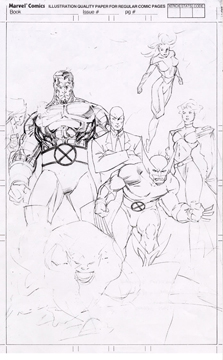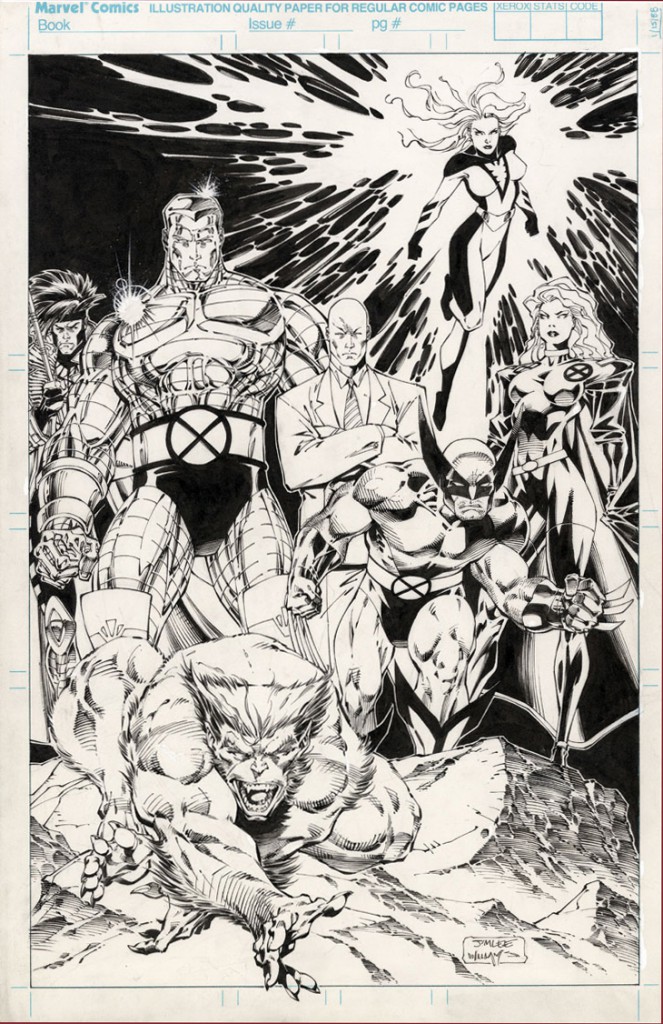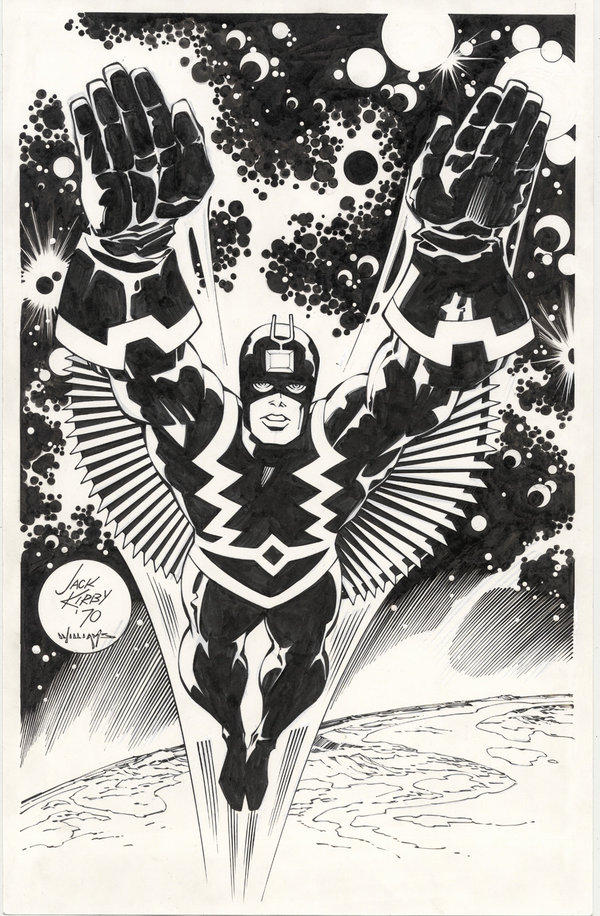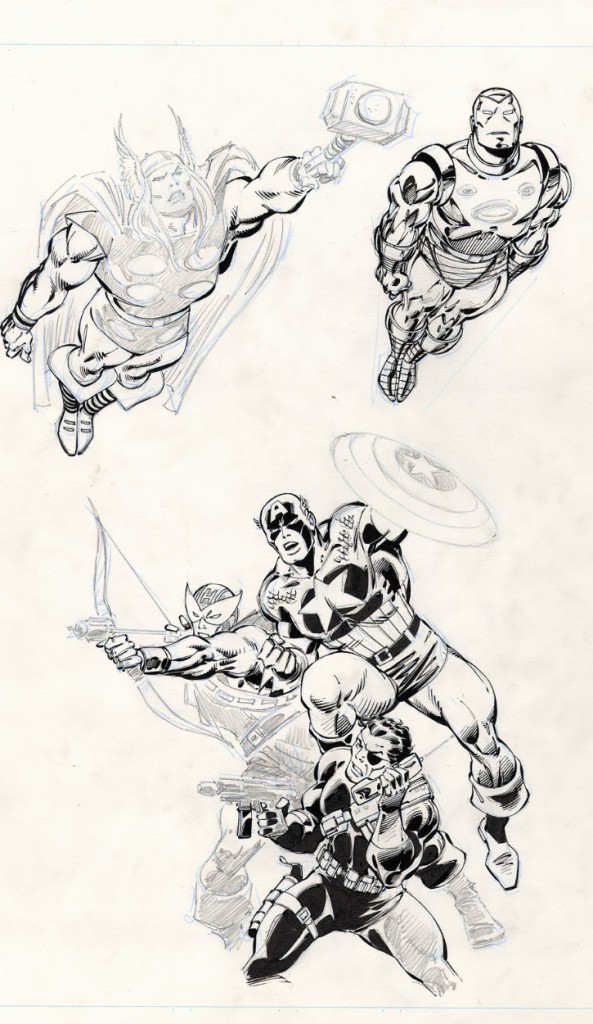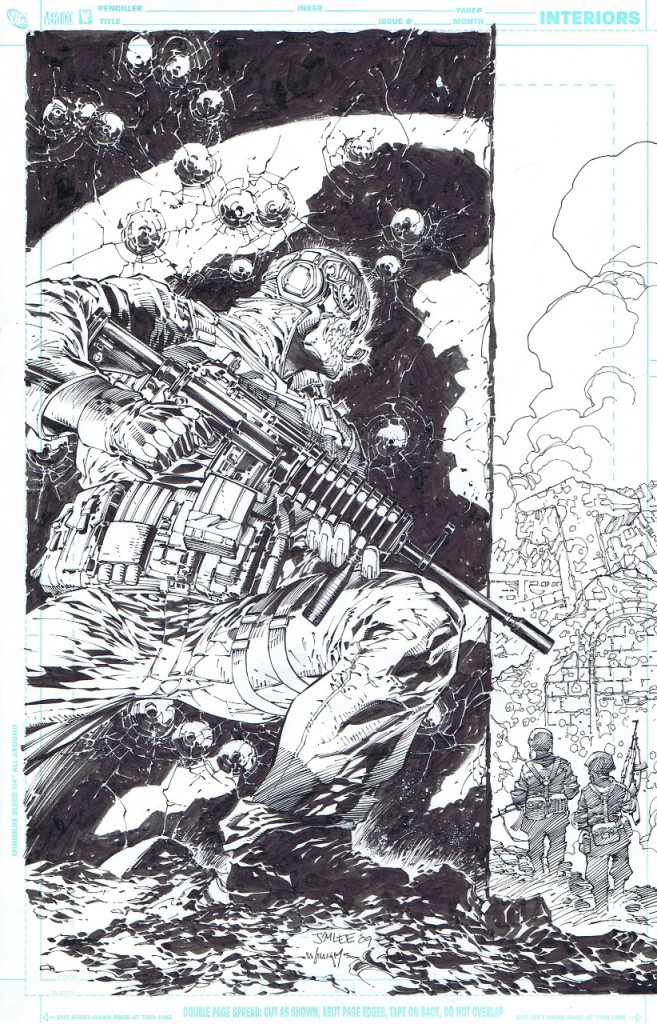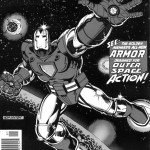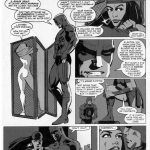Scott Williams is, without question, the most influential inker/finisher of the 90’s comic book era. Scott illustrated his fair share comics throughout his early career but is best known for his collaborations with Jim Lee and Whilce Portacio. Together, the three of them developed a new way to define shape and form using a very detailed cross hatching technique. Almost immediately the attractive and unusual style was copied by the vast majority of pencilers and inkers working in comics at the time. Although the trend is sometimes considered the “Image [ comics ] Style”, the look became the unofficial house style of Marvel and DC Comics throughout the 1990’s.
Scott’s popularity and talent continue to grow and influence the comic book art form. His most notable books include: Uncanny X-Men, X-Men, X-Factor, Wildcats, Batman, and Superman.
There are many Craftsmen/women in the comic book inking community who do exceptional work in the industry. Then there are a few who reach the status of Master, the ones that influence others on a wide-scale due to their sheer talent and innovations. These artists would probably be anyone who has received or will receive the Joe Sinnott Hall of Fame Award. But how many Masters create a method of inking, a style that is so revolutionary that it forces other ink artists to rethink the medium altogether. Probably once in a generation. Scott Williams is such an artist.
Scott is notable for exclusively using a pen/quill, no brush. This does not make him unique. Masters like Neal Adams, Dick Giordano. Al Williamson, etc. were ‘tool ambidextrous’ and would often ink some work in their career completely in brush and other work completely in pen. Terry Austin, whose bio is already among the Sinnott Hall of Famers, has been recognized for being the first inker Rock Star, a label usually reserved for the writers or pencil artists. He was known for inking entirely in pen, no brush (except to fill in blacks). For many years he was the only inker I knew who did this. So was Scott the eventual heir-apparent to Terry’s approach subsequently in the late ’80s? I don’t think anyone can deny Terry’s influence on fans and artists and Scott surely was inspired. But Scott has stated in an interview that his style was formed from trying to simulate Klaus Janson‘s inks which focus a large part on extreme differences and contrasts with thin and thick line weights. But where Klaus used brush for much of this, Scott used only pen and what developed (with probably a little influence from the style of Bob Layton) was something entirely separate and different from his goal: a new style. And a popular and exciting style (or in publisher’s terms: profitable) among fans and peers. This style was harder and more angular than the organic look of rounded brush lines. Weight distribution was often more random. There was a lot of cross-hatching. And lines often doubled up side-by-side, thick and thin. And there were ‘dots and dashes’ which inker Al Milgrom affectionately labeled as Morse Code inking.
Scott was an essential part of the formation of Image Comics in 1992 on the west coast and he influenced many of the studios there to follow his fan-favorite lead like Extreme and Top Cow. Artists of this ilk and those that followed included Dan Panosian, Art Thibert, Tim Townsend, Danny Miki, Alex Garner, John Dell, Mark Morales, Batt, D-Tron, Sandra Hope, and many others. Due to the above-mentioned factors, the style that Scott ‘fathered’ became known all but officially as the Image-Style or the West Coast-Style of inking. But these labels grew obsolete as artists proceeded to work for other studios/ publishers and in other locations. Later inkers brought something new to the look, but inkers since can almost be divided into two groups with the quill style group on one hand and the brush style, or ‘old-school style’ that may combine both tools, on the other hand. The look may today seem ubiquitous but the industry cannot fail to recognize Scott’s contribution to the art form.
(Note: this bio was influenced by an earlier Inkblots article I wrote for SKETCH Magazine that later appeared at FirstComicsNews 4/1/10)

